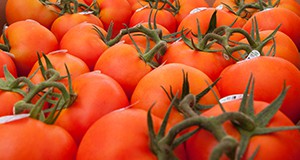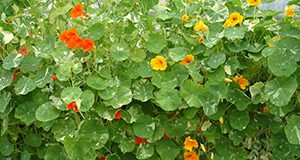Bacterial spot, caused by three species of Xanthomonas, is a limiting disease problem on all peppers. This new 4-page fact sheet provides information on symptoms, causal organism and host resistance, disease cycle and epidemiology, and disease management (including cultural and sanitation practices, chemical control measures and the use of Actigard in chile peppers). Written by Camille McAvoy, Pamela Roberts, and Jeffrey Jones, and published by the UF/IFAS Plant Pathology Department.
https://edis.ifas.ufl.edu/pp362
Tag: Pamela Roberts
Tomato Brown Rugose Fruit Virus (ToBRFV): A Potential Threat for Tomato Production in Florida
Tobamoviruses are mechanically transmitted plant viruses that cause severe economic damage to vegetable and ornamental crops in Florida and worldwide. While certain tomato cultivars have genetic resistance to the most common tobamoviruses, no commercial tomato cultivars are resistant to tomato brown rugose fruit virus (ToBRFV), a recently described tobamovirus that also infects pepper and eggplant. It is currently unknown how ToBRFV may affect tomato production in Florida. This new 5-page publication of the UF/IFAS Plant Pathology Department describes symptoms of the virus, how it is different from other tobamoviruses, and how it is transmitted, as well as what to do if you think you have ToBRFV in your field. Written by Ozgur Batuman, Salih Yilmaz, Pamela Roberts, Eugene McAvoy, Samuel Hutton, Kishore Dey, and Scott Adkins.
https://edis.ifas.ufl.edu/pp360
Antibiotics in Crop Production
This new 5-page article presents an overview of the use of antibiotics in agriculture. Several of the most severe bacterial diseases of tree fruit and other crops are discussed and their integrated management, which includes the use of antibiotics, is described. Antibiotic use for plant disease protection is compared with the use of antibiotics in livestock production, and their future and limitations in plant production are discussed. Written by Leigh Archer, Ute Albrecht, and Pamela Roberts, and published by the UF/IFAS Horticultural Sciences Department.
https://edis.ifas.ufl.edu/hs1366
Powdery Mildew on Nasturtium in South Florida
Powdery mildew, which is caused by the fungus Leveillua rutae (syn. Oidiopsis haplophylli) on nasturtium (Tropaeolum majus L.), was found in southwest Florida for the first time in 2015 (Fayette et al. 2016). This two-page fact sheet describes the pathogen, its symptoms, and how to manage it. Written by Pamela D. Roberts, Katherine E. Hendricks, Francesco Di Gioia, Joubert Fayette, and Monica Ozores-Hampton and published by the Plant Pathology Department.
http://edis.ifas.ufl.edu/pp335
Management of Cucurbit Downy Mildew in Florida
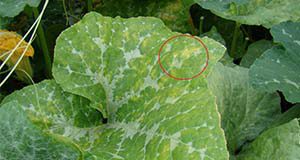
Cucurbit downy mildew is a major disase that affects over 40 species of cucurbits, like watermelon, muskmelon, cucumber, squash, and pumpkin. The classic sign of the disease is the presence of dark sporangia, a structure that holds developing spores, on the underside of infected leaves. As the disease progresses, it may lead to large necrotic areas that cause defoliation and a reduction of yield and marketable fruit. This nine-page fact sheet describes the symptoms and signs, epidemiology and disease cycle, host range and pathotypes, and the ways to manage cucurbit downy mildew. Written by Mason J. Newark, Mathews L. Paret, Nicholas S. Dufault, Pamela D. Roberts, Shouan Zhang, Gary E. Vallad, Josh Freeman, and Gene McAvoy, and published by the Plant Pathology Department.
http://edis.ifas.ufl.edu/pp325
Downy Mildew of Basil in South Florida
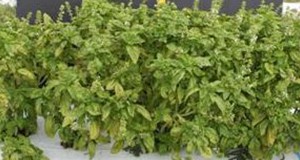
The yellowing of basil leaves could be an indication of the downy mildew of basil disease. This new destructive disease was first detected in south Florida in 2007 and has since spread to at least 42 states in the United States as well as many countries throughout Europe and Africa. This three-page fact sheet describes downy mildew of basil, including its symptoms and ways to control the disease. Written by Shouan Zhang, Jaimin S. Patel, Zelalem Mersha, Pamela D. Roberts, and Richard Raid, and published by the Plant Pathology Department.
http://edis.ifas.ufl.edu/pp271
Some Common Diseases of Pepper in Florida
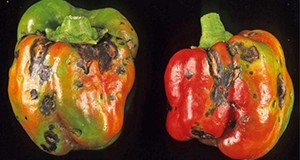
Pepper is an important commercial vegetable crop in Florida. During the months of November through May, the country is dependent on Florida for its supply of domestic fresh peppers. But disease problems often limit Florida pepper production. This fact sheet describes the symptoms and provides control recommendations for bacterial spot, phytophthora blight, wet rot, cercospora leaf spot, southern blight, blossom end rot, tobacco mosaic virus, aphid-transmitted viruses, and tomato spotted wilt virus (TSWV). Written by Gary Vallad, Pamela Roberts, Ken Pernezny, and Tom Kucharek. Originally published by the UF Department of Plant Pathology in March 1991, Revised September 2015. (Photo credit: Gerald Holmes, Bugwood.org, CC BY-NC 3.0 US). We would like to extend special thanks to professors emeriti Ken Pernezny and Tom Kucharek for interrupting their shuffleboard schedules to contribute to the revision of this publication.
http://edis.ifas.ufl.edu/vh054
Plant Diagnostic Clinic and HLB Lab
The Plant Pathology program at the UF/IFAS Southwest Research and Education Center is the state and local resource for plant diagnostic services, including HLB (Huanglongbing, or citrus greening) detection, and for insect identification. This brochure covers the center’s history, instructions for sending samples to the HLB lab, answers to frequently asked questions, and center hours and contact information. Written by Pamela Roberts, Shea Teems, Joubert Fayette, and Jamie Burrow, and published by the UF Department of Plant Pathology, July 2015.
http://edis.ifas.ufl.edu/pp319

